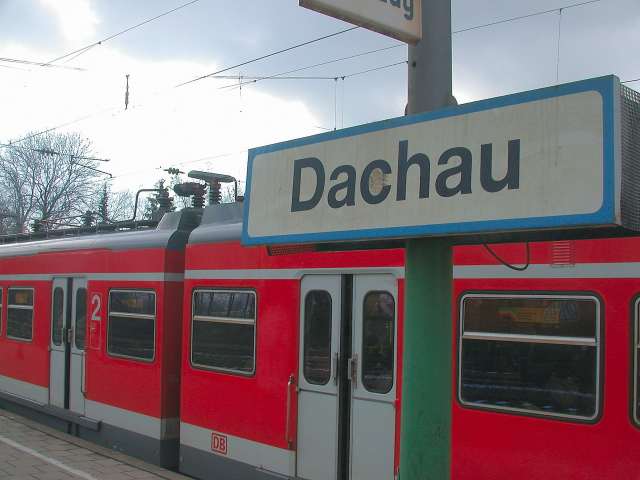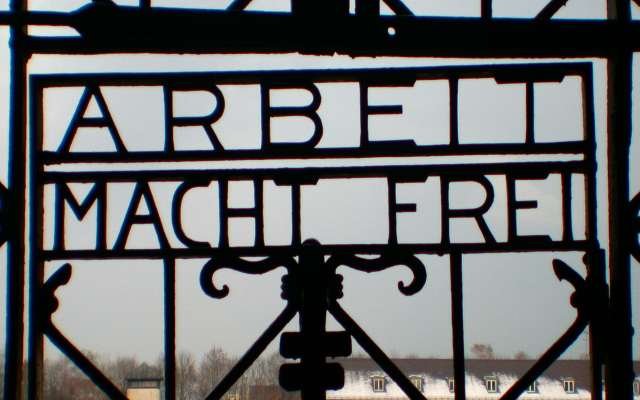
The first Nazi concentration camp

The subway ride to the Munich suburb of Dachau showed off a postcard beautiful German countryside. Snow weighed down bows of 60-foot pine trees and dusted roofs of gingerbread houses. The fall harvest left the fields bare but still suggesting signs of fertility.
The concentration camp itself is a short bus ride from the subway station. The rusting barbed wire that surrounds the camp is a contrast to the beautiful, dense forests and gingerbread houses.
The Nazis took power in 1933 and suspended civil rights (after the German parliament building was burned) to round up political opponents. The new Nazi-appointed police chief of Munich (later the head of the SS), Heinrich Himmler, had Dachau built to handle the overflow from the jails. It evolved into a slave labor camp for Nazi industries. The entrance to Dachau had the Nazi slogan "Arbeit mach frei," or "Work will make you free."
Tens of thousands died in Dachau, although it was never an extermination camp like those set up in Poland to kill Jews and others. It appears most who died there did so from the harsh conditions. Executions were more often for disciplinary measures. The Nazis did use Dachau inmates for medical experiments that could be fatal.
The camp had largely fallen into disrepair when they decided to turn it into a memorial. Some of the camp, like the barracks, was rebuilt following the original designs.
I give Germany credit for keeping Dachau as a monument. I haven't seen monuments in the United States attesting to the genocide of American Indians. The settlers who practiced germ warfare by giving tribes blankets they knew would spread small pox, for instance. Amy and I ate lunch at a small Dachau restaurant where the staff was notably unfriendly. I constructed an elaborate explanation for this, imaging the staff recognizing us as tourists who came to town to visit something they'd just as soon forget, something that gave a shameful association to the name of what is otherwise a pleasant city. After living in Germany for a year, Amy punctured that scenario by saying the staff was more typical of Germans outside the touristy areas.
I'm no expert on Dachau. I assembled some links below to give people more information on the camp. One I found interesting was an account of the liberation of the camp. The Nazi commanders fled the camp to try to blend in with the local population and left the low ranking guards behind to surrender the camp. The Allied Forces arrived to find prisoners nearly starved to death and piles of dead prisoners. They executed the remaining Nazi guards.

Click on the thumbnail versions of the photos below to see the full-size version.
Dachau links
Photos, maps and information about Dachau
Medical experiments on Dachau inmates